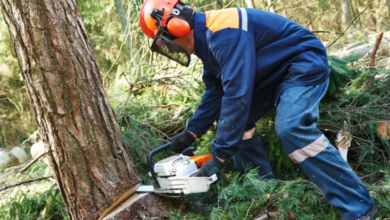Stainless Steel Fabrication Explained: Grades, Finishes, and Local Expertise

From beachfront apartments to commercial kitchens and marinas, the Gold Coast is a punishing environment for any material that isn’t prepared for salt, sun, and humidity. Rust never rests, especially by the sea, and that’s why stainless steel fabrication Gold Coast projects have become the go-to solution for builders, designers, and homeowners who want durability that looks as good as it performs.
This guide explains how stainless fabrication works, why grade and finish selection are crucial, what local services are available, and how to plan a project that can handle years of coastal weather without constant upkeep or unexpected costs.
How Stainless Steel Fabrication Works
Stainless steel fabrication is both an art and a science. It takes a flat sheet, tube, or plate and turns it into functional, corrosion-resistant structures — anything from a marina ladder to a restaurant benchtop. The process involves several precision steps:
- Cutting: CNC laser or plasma cutting delivers clean edges and tight tolerances.
- Forming: Press brakes and rollers shape the material, often using radius tooling to avoid bruising brushed or polished surfaces.
- Welding: TIG is used for clean, sanitary welds (perfect for kitchens and handrails), while MIG welding handles heavier sections. Argon purging ensures no oxidation inside tubes or food-grade joins.
- Finishing: Grinding, pickling, passivating, or electropolishing restores the metal’s corrosion resistance and achieves the desired aesthetic. Finishing is critical in coastal air — even minor imperfections can become corrosion hotspots.
Gold Coast fabricators often tailor their workflow to suit the environment — using low-carbon grades (316L or 304L), isolating materials from carbon steel tools, and handling every piece as if it’s already headed for the salt spray.
Why Stainless Steel Outperforms in Coastal Conditions
See also: How to Improve My Gaming Lcftechmods: Improving Your Gaming
Corrosion Resistance
Sea air carries chloride salts that cling to surfaces and pull in moisture. This accelerates corrosion, especially in “splash zones” such as boardwalks, balconies, and marinas. Stainless steel resists these attacks — but only if the right grade and finish are used.
- 304 Stainless: A durable, cost-effective grade for indoor use or projects several kilometres from the beach.
- 316 / 316L Stainless: The Gold Coast favorite. With added molybdenum, it resists pitting, tea staining, and general corrosion far better than 304. It’s the standard for pool fencing, outdoor balustrades, and marine fittings.
- Duplex (e.g., 2205): A high-performance option for extreme marine zones or structural loads. Stronger than 316 and nearly immune to pitting, though it requires specialist welding procedures.
The rule of thumb for coastal builders is simple: if you can smell the ocean, specify 316.
Design Choices That Prevent Corrosion
Even the best metal can fail if the design traps salt or moisture. Local experts in stainless steel fabrication Gold Coast projects design every detail to breathe, drain, and resist corrosion.
- Add drainage and weep holes: Prevent water from pooling inside tubes and joints.
- Use continuous welds: Avoid stitch welds that trap moisture or salt.
- Isolate dissimilar metals: Separate stainless steel from aluminium or galvanised steel using nylon washers or plastic inserts.
- Smooth and polished surfaces: A brushed (No.4) or electropolished finish resists tea staining better than rougher surfaces.
A smooth, clean finish isn’t just aesthetic — it’s protective. In marine air, microscopic imperfections can act as corrosion anchors, which is why finishing standards matter as much as grade selection.
Applications Across the Coast
Stainless steel fabrication touches nearly every sector on the Gold Coast:
- Residential: Outdoor kitchens, stair stringers, balustrades, and BBQ frames that can handle salt and rain.
- Commercial: Café counters, prep benches, splashbacks, and compliant handrails built for hygiene and heavy use.
- Marine: Jetty ladders, handrails, cleats, and bollards that endure direct seawater exposure.
Local workshops often manage everything from CAD design and prototyping to site installation. Mobile TIG and MIG welding rigs allow for on-site repairs and retrofits — crucial for waterfront properties and marina maintenance.
Finishes and Treatments That Make the Difference
The right finish determines both the appearance and lifespan of stainless steel.
- Brushed (No.4): The most common finish — hides fingerprints, is low maintenance, and easy to clean.
- Mirror (No.8): Premium appearance but high upkeep, best for signage and interiors
- Bead-Blasted: Low-glare, textured matte finish ideal for architectural panels.
- Electropolished: Chemically smooths the surface for superior corrosion resistance — perfect for marine ladders and railings.
- Passivation: A chemical treatment that removes iron contamination and restores the metal’s protective oxide layer after welding or grinding.
High-quality finishing not only enhances appearance but also prevents “tea staining” — the light brown discoloration that plagues poorly finished stainless in coastal air.
Planning, Budgeting, and Lead Times
Costs depend on grade, thickness, finish, and complexity. 316-grade stainless and electropolished finishes carry a premium, but they more than pay off in longevity. Complex shapes, curved sections, and mirror polishing increase fabrication hours.
Typical lead times range from 2 to 6 weeks, depending on project size and finishing schedules. Thoughtful planning, including precise drawings, early material selection, and coordination with other trades, avoids rework and installation delays.
To get the most accurate quote, include:
- Material grade and finish
- Measurements and load requirements
- Site photos or drawings
- Quantity and delivery timeframe
Experienced Gold Coast fabricators will also provide maintenance recommendations to preserve the finish for years to come.
Conclusion
Stainless steel isn’t just strong — it’s smart. When specified and fabricated correctly, it stands up to the Gold Coast’s salt, sun, and storms with minimal maintenance. Choosing 316-grade metal, ensuring proper finishing, and working with experienced local fabricators will keep your project looking sharp and performing flawlessly for decades.
Whether it’s a marina railing, a café pass, or a balcony balustrade catching the afternoon light, well-executed stainless steel fabrication brings together beauty, practicality, and endurance — exactly what coastal living demands.




